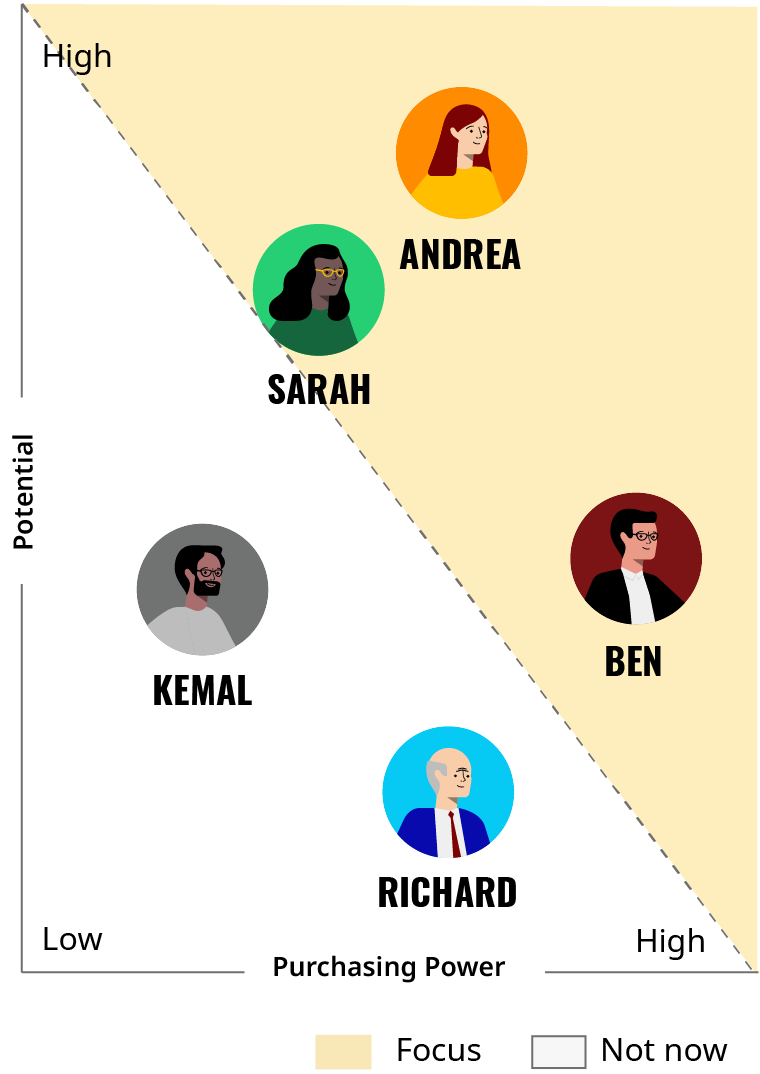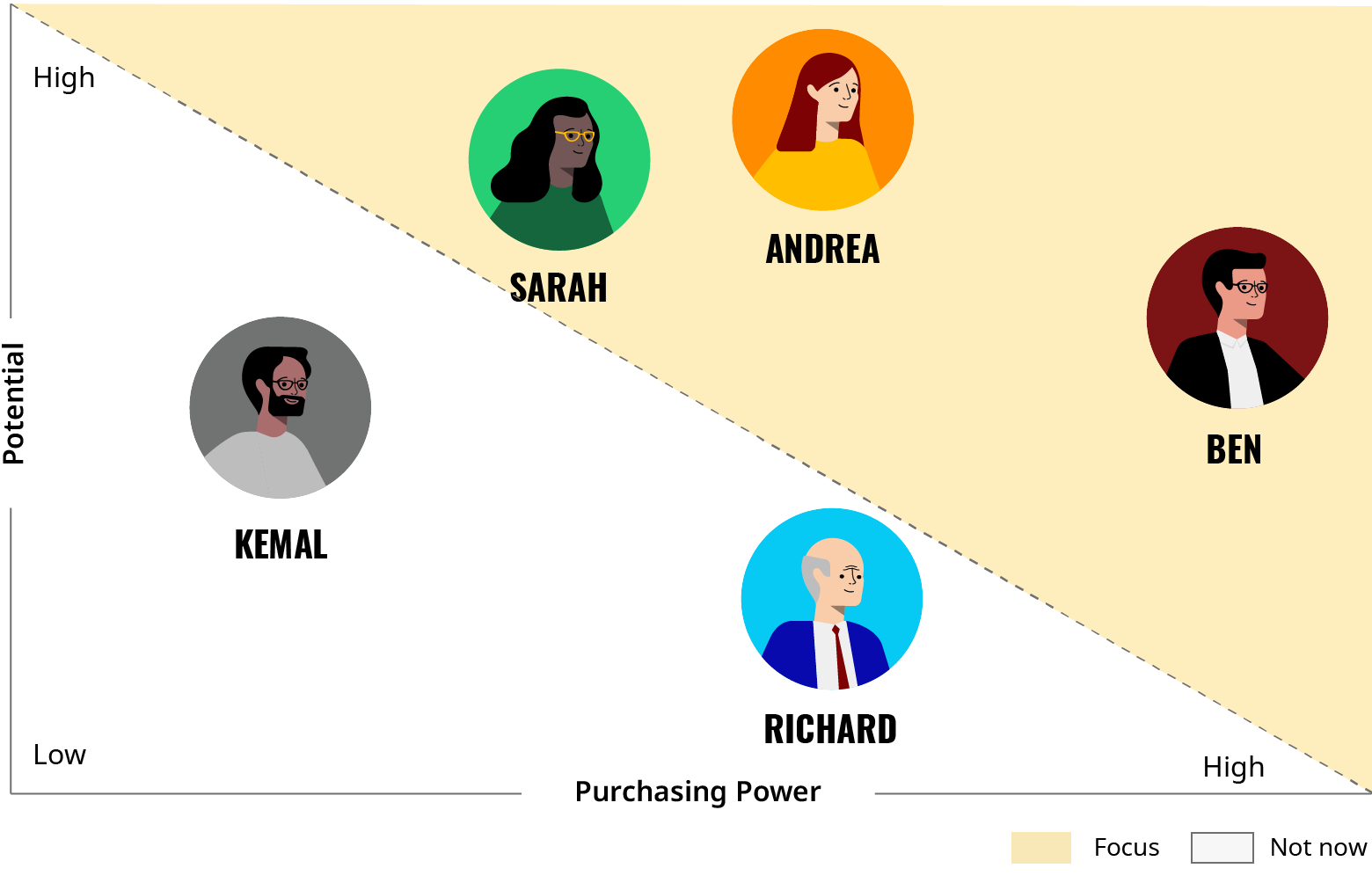Comparing the results of the different persona groups it strikes that Andrea and Sarah show a very high average interest while Richard shows the lowest overall interest. On average Ben and Kemal have a similar level of interest. However, the standard deviation and spread across products is higher for Kemal which show that the interest varies highly between the different products and services. Taking into account the average interest and the purchasing power of the persona groups they can be differentiated in attractive and less attractive target segments for offerings of utilities.
Andrea and Ben both have a relatively high purchasing power and could be targeted directly with more cost intense products and services. A potential sales approach for the very interested Andrea should include detailed information on the offerings and a modular structure, so the customer can choose specific elements according to their individual preference. Ben in contrast should be targeted with full service solutions. He is generally willing to pay for a more sustainable offering but is not interested to get involved in too many details. The third persona group within the focus area is Sarah with a very high interest but a lower purchasing power. Since the purchasing power is expected to increase for a large proportion of this persona group, Sarah should be targeted with low cost or free offerings right now to build up loyalty for a long term client relationship.
The two persona groups on the lower left area of the matrix should not be considered immediate focus groups for utilities. Kemal shows a medium interest with a low purchasing power and high variation between the tested products. Thus there is no clear indication of profitable sustainable offerings for this persona group at the moment. Richard has a higher purchasing power but the lowest average interest amongst the personas. Both Kemal and Richard are not expected to move significantly within the matrix in the short term. However utilities can increase the loyalty of these groups as customers for classic power and gas products with low cost or free offerings that are already in place without additional efforts.
By implementing the tested offerings utilities can help private customers to achieve a significant reduction of their carbon footprint. Based on the relevant carbon footprint and the analysed solutions the reduction potential amounts to a substantial amount of 48% - 80% for the different persona groups. Taking their current preferences and purchasing power into account, the expected reduction is however with 7% - 47% significantly lower. So how to unlock this additional potential to reduce the carbon footprint of private consumers? There are various approaches to ensure the realization of the existing potential like campaigns to raise private customers awareness for the need to reduce their carbon footprint in fighting global warming. Besides governments and environmental organizations these approaches can also be led by utilities themselves. Other governmental instruments include incentive programs (like carbon taxes) or regulation (like banning selected technologies). Given the current political discussions these governmental instruments are more likely to increase creating additional awareness and higher adaption rates. Overall utilities are well positioned to support private customers throughout their carbon reduction journey and with the right sales proposition can build profitable business cases from sustainable offerings.








